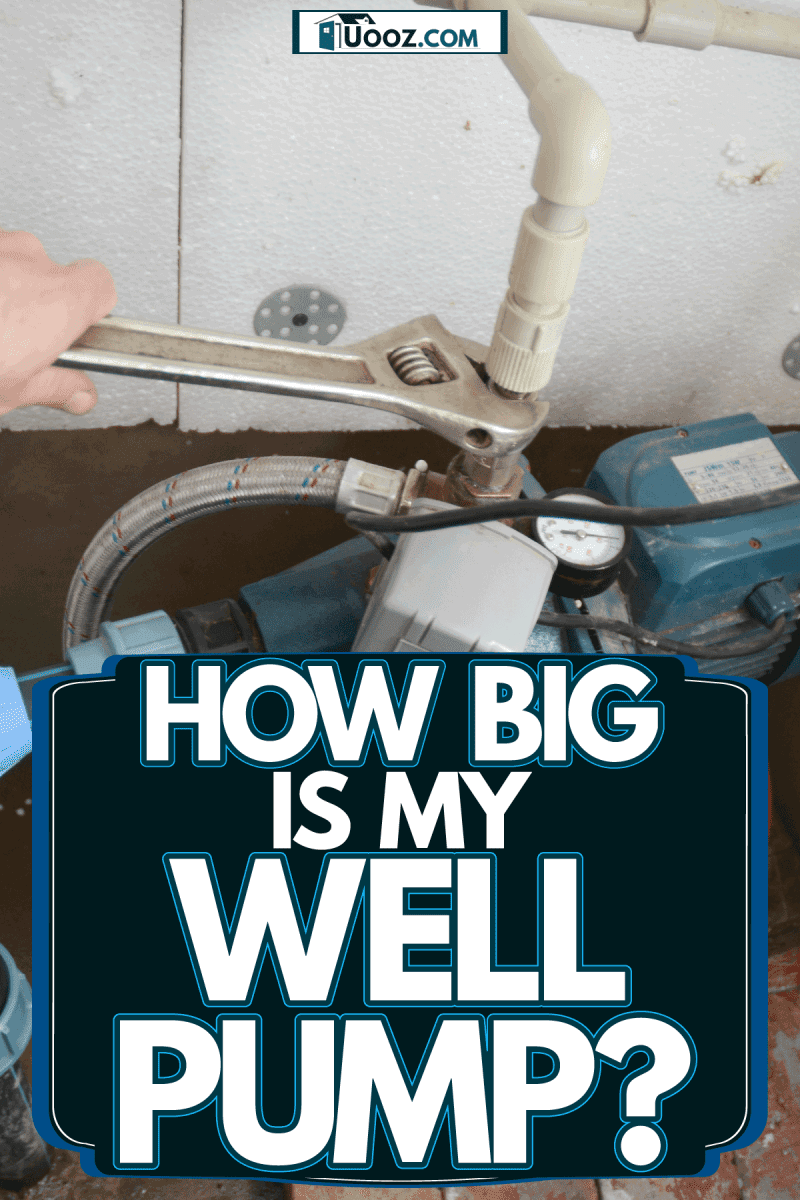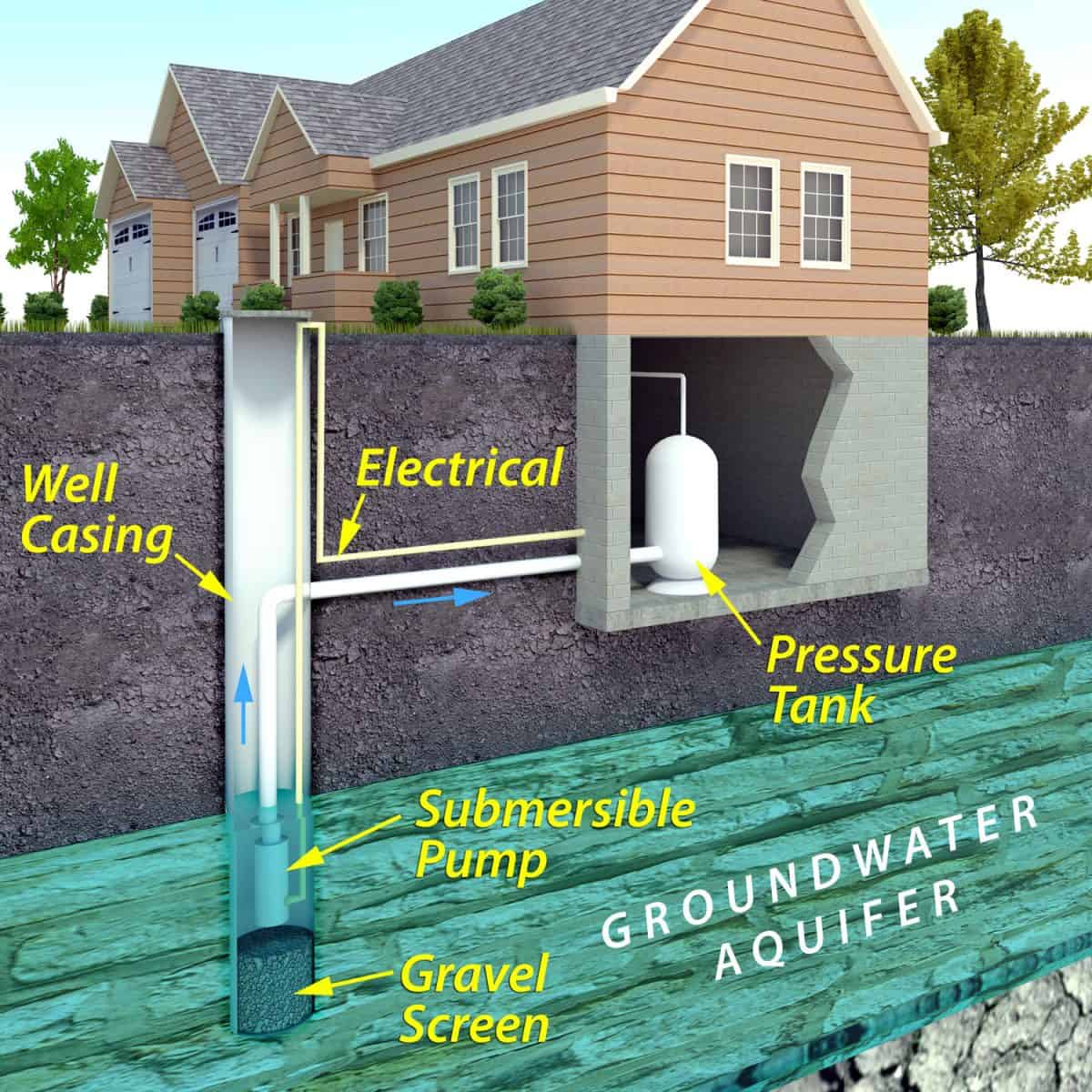If you live out in the country or just a more rural area that doesn't have a city water supply, you'll likely have to get your water from a well system. In order for the well to supply water to your home, it will have a pump installed, and they come in different sizes depending on the needs of the home. So, how do you know how big yours is? Well, we've researched the questions and have an answer for you.
The size of your well pump will depend on how deep your well is, the number of bathrooms in your home, and the number of appliances that water will be supplying. Well pumps are sized based on the number of gallons per hour (GPH), gallons per minute (GPM), or PSI they provide.
If you have a one bathroom home, your pump should be at least a seven GPM or 420 GPH pump, whereas if you have a 3-4 bathroom home, your pump should be at least a 17 GPM or 1020 GPH pump.
Now you know that your pump will be somewhere between 7 GPM and 420 GPH, but keep reading as we discuss how this is calculated and when you might need to increase pump size. Additionally, we'll answer some other questions you might have about your well pump, its size, and the best pump for a deep well.

Well Pump Sizes
We size well pumps on the number of gallons of water they can pump per minute or hour. The Water Systems Council, a nonprofit company that has made it its mission to educate the public on well water and its systems, has a table that shows how to calculate the pump size needed for your well based on the peak time of water required.
They also go into detail about other methods to calculate pump size. If these guidelines were followed when your pump was installed, it should give you a good idea of the size of your current pump.
Other methods of sizing your pump include counting the number of fixtures or appliances in your home that will use water.
To calculate the GPM needed for your home, find out the minimum pump needed for the size of your house (for example, a 3-4 bedroom home needs 8-12GPM) and then add 1 GPM for any additional appliances or fixtures that may need water. This includes, but is not limited to, showers, faucets, dishwashers, refrigerators, and washers.
How do you determine what size well pump I have?
If you're trying to find out what size well pump you already have, you will need to do some math. You will also need a 5-gallon bucket and a stopwatch or timer. You will also need to have access to a faucet and the well's pressure tank. W.P. Law Incorporated has a great method for calculating your well's flow which in turn should give you a good idea of the size of the pump.
The Method
The first step is to begin with a full pressure tank. First, turn on a faucet until you hear the well's pump kick on. The pump turns on when it needs to fill the well's pressure tank and turn's off once it is full. As soon as your pressure tank is full, you are ready to calculate the GPM.
Turn on the faucet again and begin filling a five-gallon bucket. Measure the amount of water that comes out. As soon as the pump turns on, turn off the faucet and start your stopwatch.
Time how long it takes for the pump to turn off and round to the nearest second. Divide the number of gallons of water you collected by the number of seconds it took for the pump to run a cycle. Multiply that number by 60 in order to convert it to gallons per minute, and this is the flow rate of your well.
Pumps by Horsepower
Another way pumps are measured is by horsepower. Submersible well pumps range in power from 1/2 Hp to 1 1/2 HP. The greater the horsepower, the deeper the pump can pull water from. If you are replacing your pump, you should choose a pump with the same horsepower as your previous pump. It should be listed on the pump itself.
However, if you're installing a new system, you may need to know the correct pump to use for the depth of your well. In this case, it is important to remember that you shouldn't choose a pump based on horsepower alone. It's much more important to choose a pump based on how much GPM or GPH it can provide.
How Deep Can a 1 HP Well Pump Go?
You can place a one HP pump as deep as 400' to 500', but the GPM will significantly reduce the deeper it goes. For example, one type of well pump (a four-inch tri seal pump) will work best at 200' to 350' and will produce 8 to 18 GPM.
How Many GPH is a 1 HP Pump?
There is no exact answer to this. The number of GPH a one HP pump can pump depends on the type of pump it is and how deep it is placed.
However, for a generic example, a one HP pump placed at 200' can generally produce 10 GPH, and a 2-line 1HP jet pump at 30' can produce up to 960 GPH. As you can see, the GPH varies greatly. That being said, well pump manufacturers will usually list both the HP and GPM/GPH in the product description.
What is the Difference Between 1/2 HP and 3/4 HP Water Pump?
A 3/4 HP will be able to produce a higher GPM than a pump that is 1/2 HP. However, if your well had a 1/2 HP pump before, you should replace it with a pump that is also 1/2 HP unless you plan on changing the size of the jet to accommodate a bigger pump (such as a 3/4 HP pump).
If you don't change the jet, it won't be able to produce a higher GPM than you originally had, and it may cause problems for your well.
How Do you Tell if your Well Pump is 120 or 240?
There are multiple ways to tell what voltage your well pump is. If your pump is not installed yet, it will likely be listed on the pump. If the pump is already installed, but you know the make and model, you can do a quick Google search to find out. Finally, you can check your breaker box and measure the voltage on the wires connected to the pump using a multimeter.
According to one electrician, you can also tell by wire color. He explains that white wires are usually used for 120v pumps, so if you see a white wire, you're likely dealing with a 120v rather than a 240v pump.
Click here to see a Multimeter on Amazon.
What is the best pump for a deep well?
For a deep well, the best pump is either a deep well jet pump or a submersible well pump. Deep well jet pumps can efficiently extract water from a depth of 110'. Though a deep well jet pump can also extract water from greater depths, if you're well is deeper than this, you may want to opt for a submersible well pump.
Jet pumps are more expensive, but if they need servicing, they are easier to reach than a submersible pump that will likely require a trained technician to bring the pump back to the surface. It's a good idea to read some pros and cons of the two types of pumps before deciding which one is best for your well.
Click here to see Submersible Pump on Amazon.
Click here to see Deep Well Jet Pump on Amazon.
Final Thoughts
We've given you a lot of information about well pumps, and hopefully, you feel more educated and more confident about figuring out the size of your well pump. Remember, the size of your pump can depend on a number of factors, from house size to well depth. If you're still unsure, you can call a professional, and they will be able to help you further.
For more reading on the topic of well pumps, check out one of our other blog posts: Does A Well Pump Affect Water Pressure?
Or, if you'd like to prepare for a time where water might not be coming out of your faucet, check out this post: No Water Coming Out Of Faucet – What Could Be Wrong?




